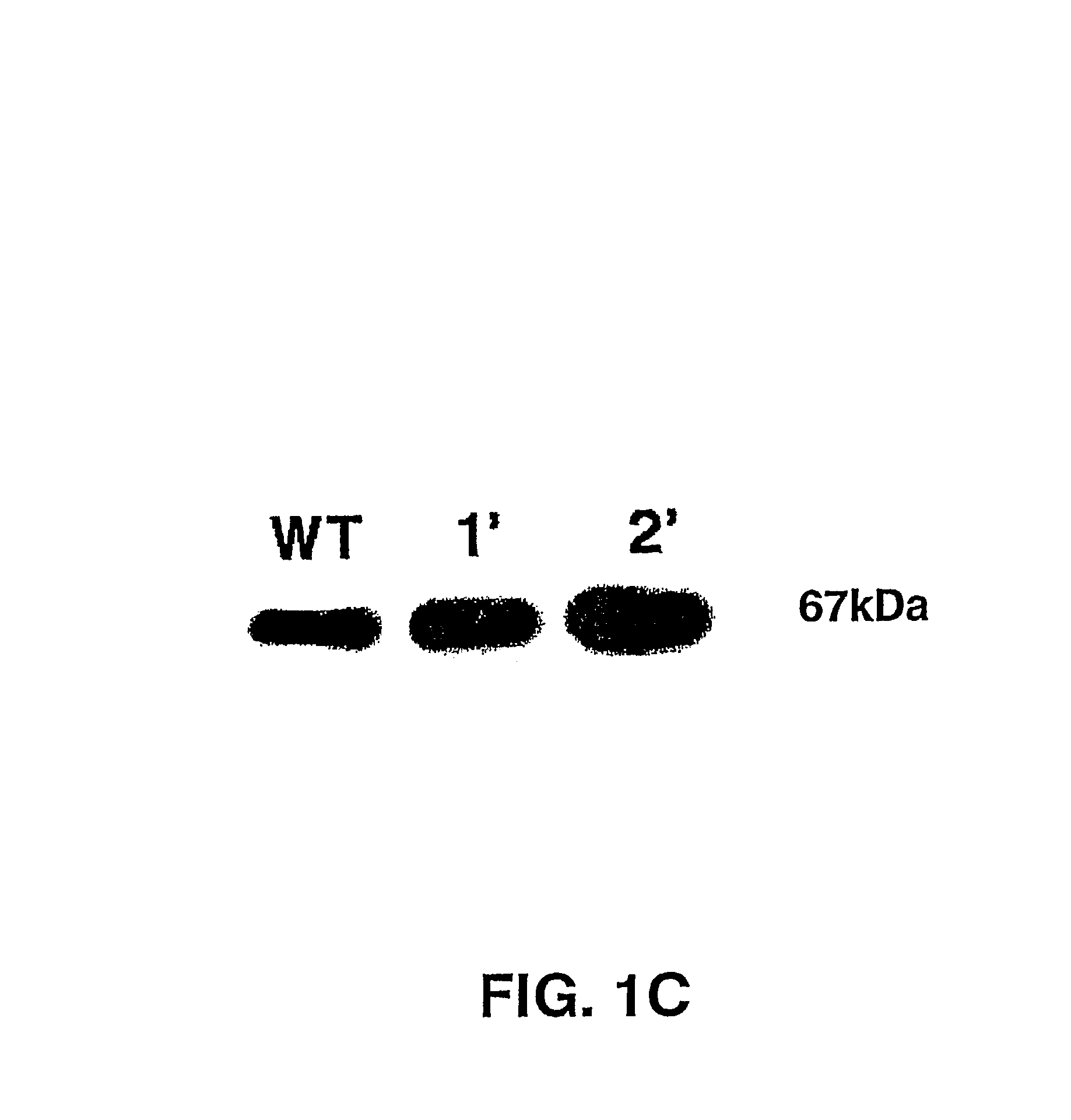Transgenic plants overexpressing a plant vacuolar H + (proton) pyrophosphatase
a plant vacuolar and transgenic technology, applied in the field of genetically altered plants, can solve the problems of reduced yield, less than desirable selective breeding techniques, and formidable food prospects for humanity as we enter the new millennium, and achieve the effects of improving stress resistance to drought and/or freezing, increasing tolerance to salt, and increasing cell division
- Summary
- Abstract
- Description
- Claims
- Application Information
AI Technical Summary
Benefits of technology
Problems solved by technology
Method used
Image
Examples
example 1
Functionality of AtNhx1 and Avp1 in Yeast Strains
[0078]To test the sequestration models set forth in FIGS. 4A and 4B, mutant yeast strains (ena1) lacking the plasma membrane sodium efflux pump, which therefore must rely on the internal detoxification system in order to grow on high salt, were constructed. The sequestration model (Nass, R. and Rao, R., J. Biol. Chem., 273:21054-21060 (1998) and, Gaxiola, R. A., et al., Proc. Natl. Acad. Sci. USA, 95:4046-4050 (1998)) of FIGS. 4A and 4B predicts that the ena1 strain would become salt tolerant if one could enhance the availability of protons in the postulated endosomal compartment, that is with increased influx of protons, cytoplasmic Na+ would be sequestered via the Nhx1 exchanger.
[0079]The yeast vacuolar ATPase is a multisubunit protein, so it is difficult to increase its activity by overexpressing any one of its subunits. Instead the same effect was achieved by increasing the influx of protons by expressing the A. thaliana AVP1 gene...
example 2
Functionality of, and Co-Localization of Gef1p and Nhx1p in Yeast Strains
[0102]The NHX1 and GEF1 genes, which have been identified as important in sodium detoxification, are also required for the detoxification of other cations. An investigation was made with respect to the viability of yeast strains mutant with respect to gef1 and nhx1 (ena1) in the presence of toxic cations, in light of the model set forth in FIGS. 4A and 4B.
[0103]The sequestration model postulates not only a functional connection between the anion channel Gef1 and sodium exchanger Nhx1 but also predicts that these two proteins co-localize within a common compartment. Because previous studies indicated that Nhx1 localizes to a pre-vacuolar compartment (Nass, R. and Rao, R., J. Biol. Chem., 273:21054-21060 (1998)), experiments were also performed to determine whether Gef1 and Nhx1 proteins co-localize to this compartment.
[0104]Materials and Methods
[0105]The strain RGY419 (gef1 nhx1) was transformed with plasmids pR...
example 3
Capacity of A. thaliana Homolog of NHX1 to Suppress Hygromycin Sensitivity of Mutant Yeast
[0112]The yeast strain described herein provides an important tool for identifying genes that mediate salt tolerance in other organisms. To test the utility of this system, a sequence from Arabidopsis (See Materials and Methods) with very high homology to the S. cerevisiae NHX1 ORF was identified and used an expressed sequence tag (see Materials and Methods) to obtain a full-length clone of this Arabidopsis gene. An alignment of the amino acid sequences of Nhx1 homologues from Arabidopsis (AtNhx1), human (HsNhe6), and yeast (ScNhx1) reveals segments of amino acid identity and similarity within predicted transmembrane domains (FIGS. 6A-C). However, it is important to note that despite these relationships, neither the C-terminal regions of AtNhx1 and ScNhx1 show a high degree of homology (FIGS. 6A-C).
[0113]A characteristic of mammalian Na+ / H+ antiporters is their inhibition by amiloride. A putati...
PUM
| Property | Measurement | Unit |
|---|---|---|
| temperature | aaaaa | aaaaa |
| pH | aaaaa | aaaaa |
| concentration | aaaaa | aaaaa |
Abstract
Description
Claims
Application Information
 Login to View More
Login to View More - R&D
- Intellectual Property
- Life Sciences
- Materials
- Tech Scout
- Unparalleled Data Quality
- Higher Quality Content
- 60% Fewer Hallucinations
Browse by: Latest US Patents, China's latest patents, Technical Efficacy Thesaurus, Application Domain, Technology Topic, Popular Technical Reports.
© 2025 PatSnap. All rights reserved.Legal|Privacy policy|Modern Slavery Act Transparency Statement|Sitemap|About US| Contact US: help@patsnap.com



